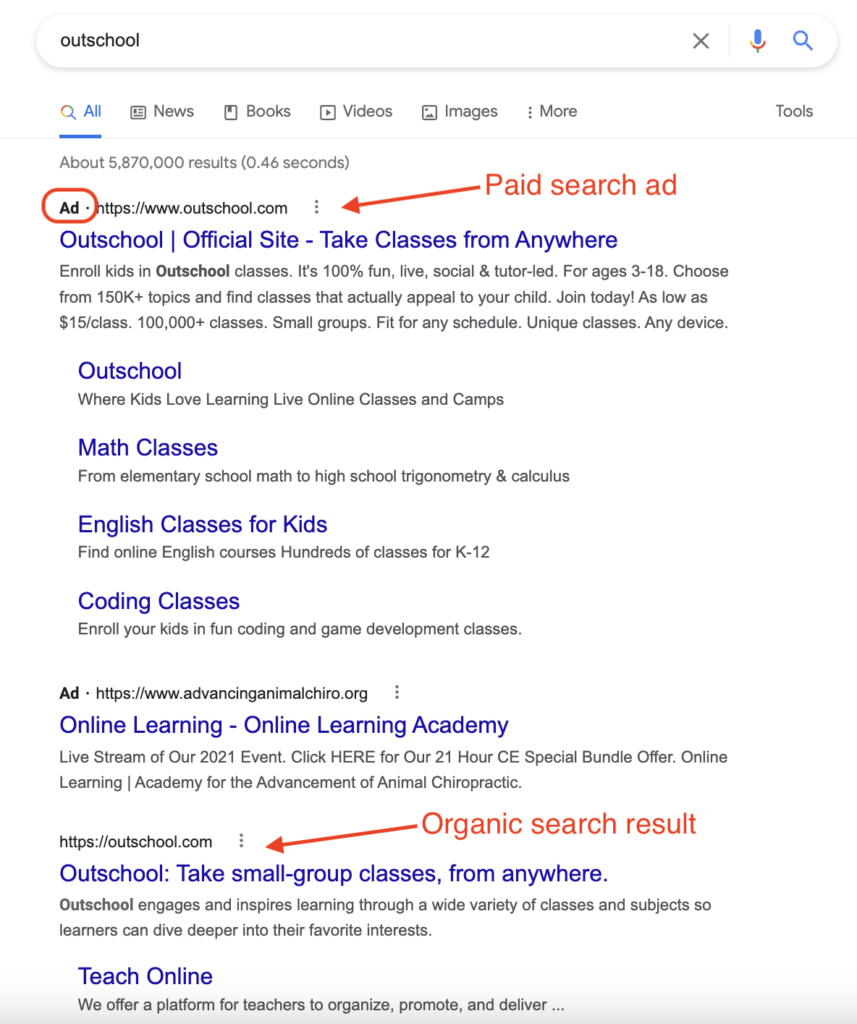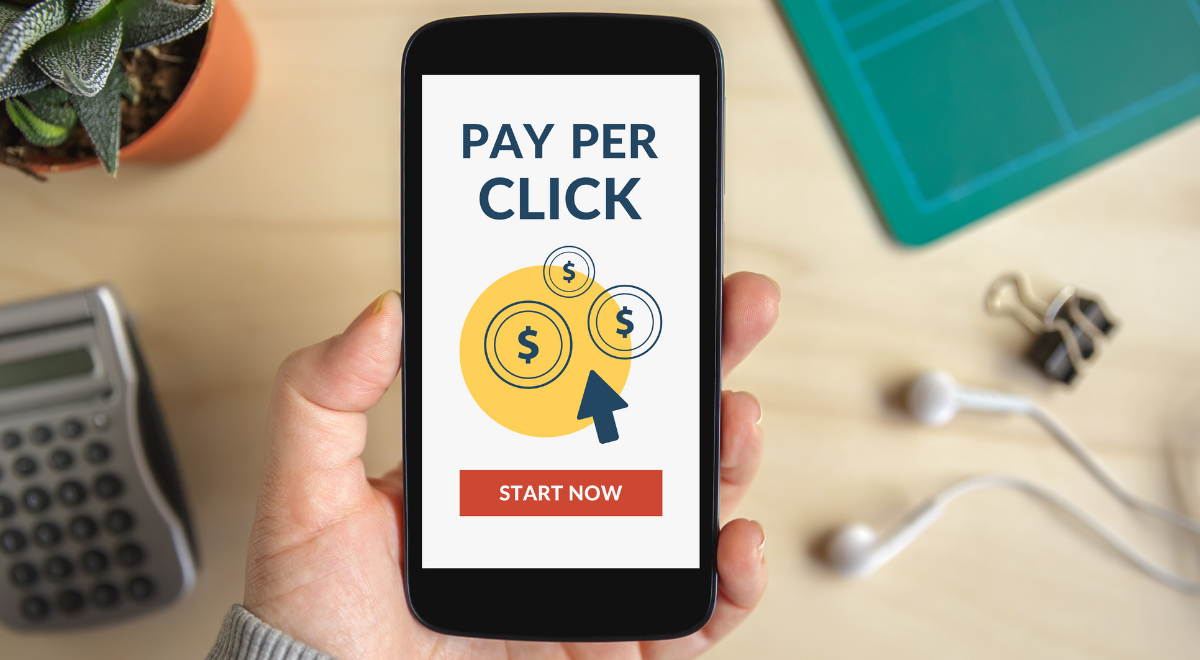Every business owner faces a similar dilemma: Should I pay for marketing services? And how can I be sure I’ll make that money back (and more) in sales? As an educator entrepreneur, paying for advertising inevitably comes with some risk, but there are ways to increase your chances of a positive return on investment (ROI). Meaning: You earned more in class enrollments inspired by a marketing campaign than you spent on the ad.
Digital advertising is usually the most cost-effective and easily accessible form of paid advertising for entrepreneurs. If you (like many solopreneurs) aren’t ready to invest in hiring a professional marketing consultant, online ads offer the opportunity to do some DIY class promotion that can achieve real results for your business.
In this article, we’ll go over a few key considerations for educators thinking about using paid ads on social media, search engines, and the web to grow their business, including:
- How to decide if paid ads are the right choice to reach your teaching business goals
- Different types of paid digital promotions, including pay-per-click (PPC), social media, and display ads
Should you invest in paid advertising?
Here’s the deal: Rarely is marketing a “set-it-and-forget-it” process, and deciding to work toward growing your following on Outschool is a real (and exciting) commitment. To put your best foot forward and set yourself up to make – not waste – money in the long term, ask yourself:
- Am I ready to put time and energy toward creating, monitoring, and improving paid digital advertisements?
- Can I afford to lose the money I’m investing if a campaign doesn’t perform as I expect it to?
- Have I researched my target audience and established realistic goals for my teaching business that will guide a successful digital marketing campaign? Some examples of common goals are increasing enrollments from new learners, building brand awareness, and learning what types of ad content inspire action from my audience and help me reach my business goals
If you answered “No” to any of the above questions, you might want to consider another marketing channel or build up your brand’s foundation before launching a paid marketing campaign. If you answered “Yes!” to all three, then your next step is to decide which type of paid ads you’d like to add to your marketing toolbox.
First: Pick a destination for clicks
Educators on Outschool have a specific choice to make when creating digital ads: Where will users end up after clicking on your ad? They could arrive at your Outschool class listings or profile, business website, or social media profiles. Where you send them depends on your goals for the campaign and your performance tracking plan – here are a few pros and cons for each option:
Your Outschool listings or profile
- Pro: You reduce the number of steps that parents need to take to enroll in a class; if they’re interested, they can sign up right away on Outschool. Plus, there’s no need to create a business website or social media profile if you don’t already have one.
- Con: It can sometimes be challenging to trace where new enrollments come from without directly asking the parent. You could still look for correlations between class registrations and the time windows where you have paid ad campaigns running to get a sense of the relationship between the two.
Your teaching business website
- Pro: You can more easily trace which visitors arrive at your website from advertisements through built-in web analytics tools. Your website can also help convert interested parents into enrolled families by answering their questions and providing more info about what you teach.
- Con: You add an extra step to the enrollment process; parents will need to head to Outschool to make their final purchase after visiting your website.
Your social media profiles
- Pro: You can build brand awareness by introducing parents to your teaching style, personality, and class offerings that you showcase in your posts. One educator shared an example of how she’s increased enrollments by boosting Facebook posts that link to her YouTube channel in this article.
- Con: You add an extra step to the enrollment process; parents will need to head to Outschool to make their final purchase after visiting your profiles.
Keep in mind that it is against Outschool policy to communicate with enrolled parents or learners off of the Outschool platform, and you should only message those families using Outschool’s communication tools.
Types of paid digital ads
Social media
Paid social media marketing offers a lot of room for creativity and experimentation. Popular channels include Facebook, Instagram, Twitter, TikTok, LinkedIn, Pinterest, and YouTube. Most social ads are pay-per-click (PPC), where you pay for every click you receive on the promotion. You can conduct A/B testing to find winning ad designs, select your target audience through the platform’s ad campaign builder, and choose your budget for PPC ads.
To participate in social advertising, you’ll need to have business pages on each platform you’d like to run ads on first. Find out more about how to choose the best channels for your business here. If you’re launching a brand new business page, it’s a smart idea to publish some content and get your first followers (this can even be friends and family) before paying for ads. People who arrive at your business page because of an ad are more likely to trust you if they can see examples of what you teach in your posts and know that others follow you already!
Social media also tends to be a hot topic in Outschool’s Educator Communities on Facebook. Find out what’s worked for other educator entrepreneurs by exploring past threads or asking your own questions. Most importantly, avoid paying for a social ad or boosting a post “just because.” Skip feeling frustrated by ads that “didn’t seem to do anything” by starting out with a clear goal for the promotion and a plan for how you’ll evaluate whether it’s working or what you can change to improve your strategy.
To build up your knowledge before launching a campaign, visit this guide from Sprout Social for the basics of running effective social ads. Or, check out examples of ad campaigns on different platforms in this article from Hubspot.
Search engine
Google search ads can help you show up at the top of search engine results pages (SERPs) for certain keywords. Note that this is different from search engine optimization (SEO), which generates organic (unpaid) traffic by using keywords in your class listings or web content.

To run a search ad, you’ll need to select a maximum daily budget for each PPC campaign (just like you would on social media), and then Google will use a bidding system to determine when to surface your ad for searchers in your target audience. The search engine has put together a multi-step guide to building successful ads if you’re new to the process and has published their take on best practices.
When deciding to invest in paid search ads, it really comes down to whether a paid ad could help you capitalize on keyword searches that lead parents to your class listings. For example, if you’ve been working on adding keywords to your class listings or teaching business website and are seeing positive results, then creating a paid ad for your most successful keywords may help bring in even more new families. It’s definitely worth doing some keyword research and getting to know how SEO works before setting up a paid campaign.
Display ads
Display ads are the advertisements you see running as banners or sidebars on certain websites. In today’s digital marketing world, display ads can sometimes take a back seat to paid search or social ads and other organic marketing channels. They require more creative work since you’ll need to design a visual advertisement instead of just writing copy and/or choosing an accompanying photo. However, if you’re up for the task, you can follow a similar process to creating a search ad through Google Display Network.
Are paid digital ads useful for an educator entrepreneur?
What do you think? Will you invest in paid advertising or find another channel to market your teaching business? To collaborate with your fellow entrepreneurs and Outschool experts on business-building ideas, take a look at the educator events calendar and consider joining a Business Coaching cohort or explore more business tips in the Educator Handbook.

